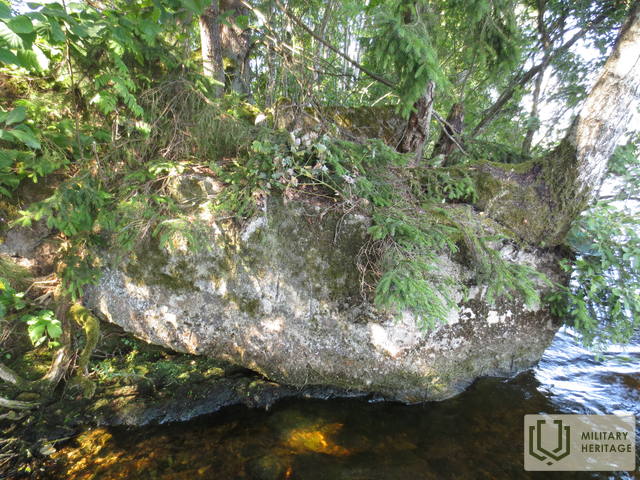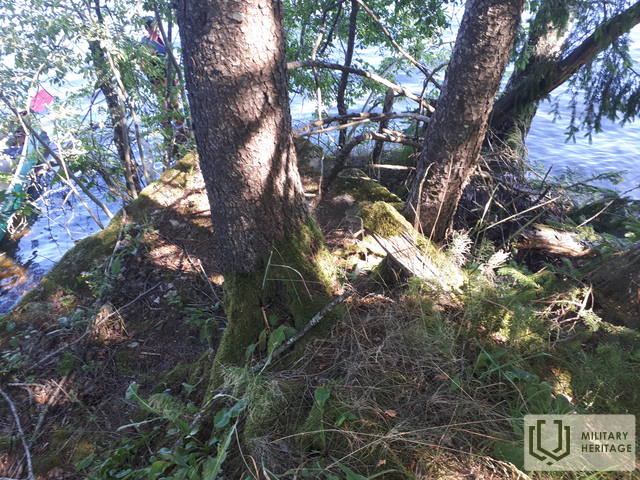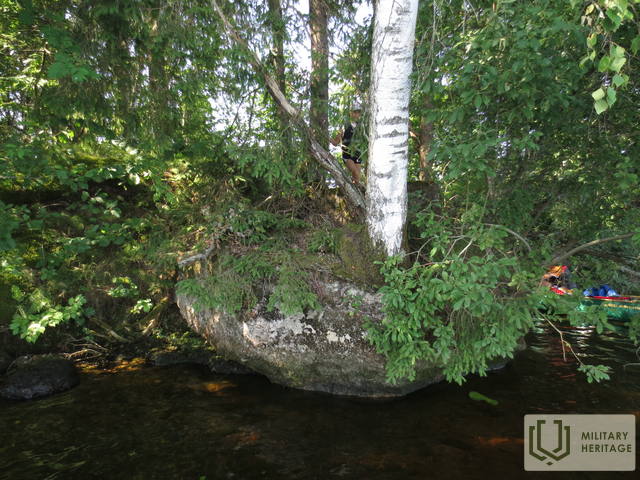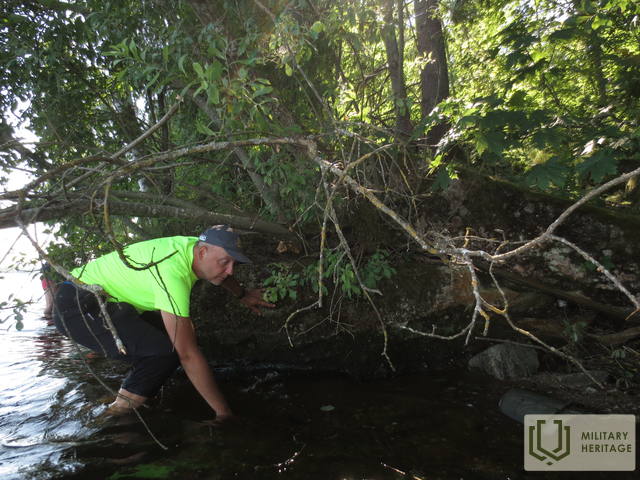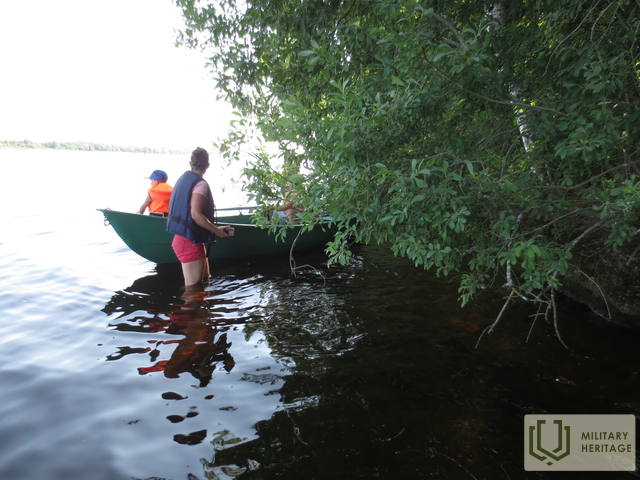Vokiečių armijos betoninio ugnies punkto liekanos Kegumo HE rezervuaro pakrantėje priešais Silapūpėžį
Įtvirtinimas


 59
59



Įsikūręs apie 0,1 km į rytus nuo Kegumo HE rezervuaro įlankos netoli Silapūpēžių, Jaunjelgavos link. Gaisrinė iš dalies įgrimzdo į vandenį, apaugo medžiais, krūmais ir kita augmenija, o nepažįstančiam iš didesnio atstumo nuo vandens pusės jis gali priminti didesnį akmenį. Vienas iš orientyrų – ant jos augantis beržas. Tai vienas iš Vokietijos armijos Pirmojo pasaulinio karo gynybos linijos ugnies taškų Dauguvos kairiajame krante, kurį galima daugiau ar mažiau atsekti per visą Dauguvos kairiojo kranto ilgį. Minėta gynybinė linija yra didelio masto karinė sistema, kuri dar nėra iki galo įvertinta kaip vientisas darinys. Gaisrinės liekanas galima apžiūrėti plaukiant valtimi palei Kegumo HE. Apie 150 m į rytus nuo Dauguvos kranto į vandenį įgrimzdo dar vieno gaisrinės liekanos.
Susijusios temos
Susijusi istorija
Gelbėtas tiltas per Negos upę nuo sprogdinimo
1944 m., vokiečiams traukiantis, buvo susprogdinta daug svarbių objektų ir to išvengti buvo labai sunku, tačiau pasakojama ir apie stebuklingus atvejus, kai vietos gyventojų drąsa ir kareivio tolerancija leido išsaugoti vietos gyventojams svarbias vietas, o lašišos išgyveno. Viena iš istorijų – apie namų šeimininkės ir vokiečių kareivio pokalbį, kuris išgelbėjo visą tiltą nuo susprogdinimo.
Pastangos užkirsti kelią Kegumo HE sprogimui
Antrojo pasaulinio karo metu, armijoms traukiantis, Latvijoje buvo susprogdinta daug kariniu ir logistiniu požiūriu svarbių objektų, kad šie ištekliai neliktų priešui. Tokie objektai buvo ir Kegumo apylinkėse, kur vienas svarbiausių objektų yra Kegumo HE, kuri, jos darbuotojų pastangų ir pastangų dėka, nebuvo visiškai sunaikinta.




